[Steven Swenson, Director of Conservation, Aldo Leopold Foundation]
Welcome, everybody. I’m Steve Swenson with the Aldo Leopold Foundation in Baraboo, Wisconsin. It’s my pleasure to introduce our next speaker, Rick Horton with the National Wild Turkey Federation, who’s going to talk to us about managing for deer and turkey and why oak matters.
Rick is the regional biologist with the National Wild Turkey Federation. He holds degrees in Wildlife Ecology, a Bachelor’s and a Master’s from the University of Wisconsin. He has previous experience with the Florida Game and Freshwater Fish Commission, the Ruffed Grouse Society, the Minnesota DNR, and presently with National Wild Turkey Federation where he’s been since 2010.
Rick collaborates with Natural Resource Agency partners on habitat conservation projects that positively impact turkey populations, provides direct policy provides policy direction on wildlife and hunting issues, administers grants and agreements that promote turkey habitat, and works with National Wild Turkey Federation volunteer leaders to implement state specific habitat and hunting access strategies.
Rick and his wife Tammy live in northern Minnesota with their English pointer, Miss B, where they enjoy grouse hunting, ice fishing, gardening, and motorcycling, and, of course, traveling somewhere warm each winter to thaw out.
[laughter]
With that, help me welcome Rick.
[applause]
[Rick Horton, Regional Biologist, National Wild Turkey Federation]
Thanks, Steve. I didn’t put in my bio, but I am from Wisconsin. So, go, Packers, right? I’m not a Vikings fan.
[laughter]
The title of the talk the title of the talk today: Oak Matters. And why does it matter? Well, first and foremost and primarily is acorns. Acorns are food for a lot of wildlife and they are I consider them a superfood. 142 calories per ounce. They’ve got 9 grams of fat, 15 grams of carbohydrates, 2 grams of protein. So, you know, if that was something we were eating, you know, that’s steak right there.
They compose more than 75% of the whitetail deer’s diet in the fall and early winter. Definitely a preferred food for deer. Deer and other animals, including black bears, will alter the distribution and travel long distances to get to acorns.
Where I live in northern Minnesota, there’s been a long-term bear research project. There’s not a lot of oaks up there. They’re pretty scattered and found along the river bottoms and whatnot, and they’ve had bears with radio tracking equipment on them that would travel 20 miles when acorns started dropping. And this is real frustrating for bear hunters because they’ll have big piles of gummy bears and pie filling out there and they got a trail camera and they’re seeing a nice bear hitting that bait and then all a sudden gone. Where’d he go? And they don’t realize how far that bear will go because this is a preferred food resource, it’s reliable, and it’s not empty calories. It’s not just sugar like gummy bears and pie filling. It’s got all these other things going for it and helps them lay on good winter fat.
Upwards of a hundred other species of birds and animals include acorns in their diets. For many, the nuts are their main food resource. And I like this line: “It’s a critical element of day to day survival but a lifeline to spring and beyond.” And that’s all about fat. It’s all about making it through the winter in good condition. Not only surviving the winter, but to be in good condition so you can breed the following year.
In a good crop year, you’ll often see deer-produced twin fawns. Sometimes triplets, but more twins thanks thanks to the improved nutrition. And turkeys will come through the winter in great condition, which is important.
A couple years ago we had a real harsh winter. Y’all are well aware 2014 was pretty tough. And turkeys in northern Wisconsin, northern Minnesota are on the upper fringe of their distribution, northern fringe of their range, and I fully expected to be getting a lot of calls about dead and dying birds. And frankly it didn’t happen. They proved themselves to be a lot more resilient than we ever thought. But the important part is coming through in good condition because the harsh winter, even if they survive, if they’re in poor condition, theyre not going to have as many eggs. If the nest gets destroyed, theyre not going to re-nest as many times. So, your productivity goes down and youll see a big dip in the population. So, having a good resource to help them go into the winter in good condition really helps across the board.
Now, in bad years, I am Biologist, so we look at things like animal guts and whatnot, and kidney fat is one of the things we look at. If youre ever cleaning a deer and you see that you find the kidneys and theyre just encased in a big globule of fat, that means that animal is in great condition. But in bad years, well see the deer that the kidneys have no fat around them. They have no internal fat reserves. And, also, yearling does, youll often see them completely not have any young. They wont conceive, or if they do conceive, if theyre in poor condition during a bad acorn year, theyll reabsorb the fetuses and just not even have young in a given year.
So, acorns are just critically important.
One thing youll notice, most oak species dont produce acorns until theyre at least thirty years old. And so, you may look around your property and go: I got a lot of oaks, where are all the acorns? But, thats the biggest thing. It takes time for them to mature to the point that they produce acorns. And then, even then, acorn production can be highly variable from year to year. The flowers can be damaged by frost. If you get a late frost, youll often see those flowers turn black and fall off and youre not going to have acorns that year.
In this country, because of the topography, cold air sinks, and so you may have no acorns in your bottom lands or partway up the slope and then all a sudden on the ridge tops youre doing pretty good. Thats a wonderful thing. You dont see wholesale crop failures as much. But, also, acorns get eaten by a lot of things. I mean, theyre when you look at an oak tree and it produces that much seed, theres a reason for it. They get eaten by all sorts of bugs and weevils. They get eaten by just about every animal and bird out there. And so, theyre putting out all this seed hoping that a few will take root. And most species of oaks will only produce on good crop every three to four years. Just because of all these different factors that kick in.
There’s a big difference between red oak and white oak. Now, when I say red oak and white oak, Im there is a species called red oak and there is a species called white oak, but these are also groups. So, the white oak group can be identified by having these round lobed leaves. Those are white oaks, and that includes the white oak, the bur oak, and the swamp white oak. Those are the most common ones in Wisconsin. Red oaks, on the other hand, and you can see on the far side there, those have pointy leaves, sharp, pointy leaves, and includes the pin oak, Hill’s oak, red oak, black oak. Those are the most common in Wisconsin.
Big differences between the two. Red oak, believe it or not, is a much more nutritious acorn. It’s higher in fat. It’s higher in protein. It’s higher in calories. So, you’d think it’d be preferred by wildlife, but, in fact, one of God’s little jokes, there’s a lot of tannins in red oak. And tannins, if if those of you that drink wine have ever had, like, a hardy red wine, like a Merlot or something that’s dry, you take a drink of it and you get that kind of acrid taste in your mouth, that dryness? That’s the tannins in the grape skins that cause that to happen. Well, same thing with these acorns. So, they’re not really a preferred food for deer because of that tannins. It makes them a little harder to digest, a little less palatable.
White oak, on the other hand, are very palatable, and when white oak acorns drop, they’re going to prefer to go for those. White oak acorns also mature in only three months, one growing season, and when they hit the ground, they germinate very fast. So, if they don’t get eaten, they’re going to germinate right away that year. So, they’re not available as a food resource after that.
Whereas red oak mature in 15 months, they last longer because of those tannins, they can store, they last well into the winter, and so, while they may not be palatable, they’re theyre available for wildlife at a much longer period. Squirrels, when they store acorns, they’re going to be storing red acorns because those are the ones that are going to last.
Red oaks, also they have two years of growth on on the tree at any given time. Because they take two years to mature, they produce every year because there’s always one growing and one maturing. And so, you’ll see two years worth of growth on the on the leaf. And whereas white oak, they just grow one time and they fall off, and then usually they produce a crop every other year. So, they’re not always available.
The nice thing about the red oaks is that this gives you insurance against a hard spring. Say, for example, they’re in flower. Theyve already got this year’s acorns are already developing. They’re in flower for next year’s acorns, and that flower gets frozen. Well, the white oaks are out of luck. They got froze off. But the reds will still produce an acorn in a year where their flowers get frozen. Now, the following year they may not, but at least it’s providing that insurance against a bad crop year.
So, like I said, animals are going to go out and vacuum up the white oak acorns right away when they hit the ground. And they’ll save the red oaks for late fall, actually even into spring. So, when you see them pawing through the snow, that’s what they’re eating. They’re eating the red oak acorns.
Other values of oaks besides acorns. I mean, the trees themselves are long lived. They provide shade and shelter. From a turkey standpoint, they often have horizontal, open limbs that provide roosting for the birds. They’ll fly up and roost at night on those limbs. And they also participate in the global exchange of oxygen and carbon dioxide. Take carbon dioxide out of the atmosphere and lock it up and store it in the trunks of their trees, and they live for a long, long time, so they’ll lock up that carbon dioxide for long periods.
Another difference with red oaks and whites, reds will their acorn production will peak when the tree is about twenty inches diameter at breast height, DBH. So that means if you go up to a tree about this high and you measure around it, if it’s twenty inches, that’s when they’re starting to peak their production. And then it’ll just gradually decline as that tree gets older and older. Whites, in contrast, they peak when they’re about twenty-six inches DBH. So, if you’re looking around on your property going, you know, is this a tree I should save or take, if they’re hitting about that size, that’s when they’re really going to peak in acorn production.
One of the things that we recommend if you’re going to manage an oak stand for acorn production is to find out find your big producers. Find the trees that are reliably producing a good acorn crop year in and year out. If you have the time, the best way to do that is monitor your forest over time. Take four or five years and just watch, pay attention. See where there’s the most acorns on the ground, the most falling. You can go out in your stands in late July and early August with a pair of binoculars and look up into the canopy and look at how many acorns are hanging on those trees. And if you monitor this over a longer period of time, you see the trends. If you don’t have the time, you can always do one year and just kind of get a snapshot. It’s much better if you can take note of it over time. Those are the trees you’re going to want to save.
Most likely these trees are the dominant and codominant trees in the stand. Your dominant trees are the biggest ones. Their canopies are higher than the rest of the tree the rest of the trees in the stand and are getting more sunlight. They’re going to produce more. Codominants are just a little bit below them, ready to take over the canopy in the next generation. And below that you’ve got suppressed trees that are just kind of existing in the shade of your dominant and codominant trees. So, paying attention to that helps you kind of see which ones you might want to leave and which ones you want to take.
So, then what you do is you conduct a thinning operation around those trees and keep those. Cut all the other species. Cut all the suppressed trees. Release those dominant, codominant, and big acorn producing trees, and allow them to get full sun. As I mentioned, there’s theres benefits to reds and there’s benefits to whites. And so, ideally, you keep a mixture of the two, somewhere around 50% to 60% mixture of the two.
Once they get that full sunlight exposure, you expect that crown to actually spread because now there’s no longer competition for sunlight. It’s going to spread out and actually increase acorn production even more. Now, at this point, if you’re just managing for acorn production, you’re pretty good. But if you talk to your foresters, what they’re going to say, now we’ve done this shelterwood harvest or this timber stand improvement and you’ve opened it up, you’re getting acorn production, those acorns are going to start setting seed and you keep monitoring your understory until you’ve got an understory that’s made up of we call it advanced regeneration. Young oak trees. That’s the stuff that’s going to take over the stand, and if you want to just regenerate the stand back to oak, once you have enough advanced regeneration, you can go in and remove the overstory. Now you’ve got a young oak stand.
If you’re talking about acorn production, you realize if you do that it’s going to be thirty years until you get acorns. So, maybe it’s best to leave some of those. You can keep opening up your stand a little more for light but keep those scattered trees for acorn production.
Just last week I was out looking at a habitat project in west-central Minnesota, and we were talking about treating invasive species and whatnot. I walked into this forest stand, and once we pushed out of the prairie, in through that kind of rim of brush around the edge of the stand and got in there, my eyes got adjusted, I realized what I was looking at. This was an old pasture that there were huge white oak trees. Great big, gnarly white oaks with big horizontal limbs. That tree had obviously developed in the full sun. I think it was an old pasture. And once they pulled the cows off of it, all these little sugar maples and all these other species started growing in around that old oak. And it was succeeding really fast to sugar maple/basswood, but it really wanted to be an oak stand. And these trees were gorgeous. To me, that’s the easiest way to manage for oaks. You go in there and just cut all that other stuff and open it up. But it literally looked like this.
Nice, big oak tree surrounded by other stuff. Cut it all out, let that big one have the sun again. If you want to get some acorns going, you can scarify the soil a little bit, get some dirt exposed where those acorns can fall in the dirt. It wouldn’t take too long. You could either have a savanna or have a young oak forest. Pretty simple procedure.
Similarly, I went to another stand last the week before that in Minnesota where they had a big blow down event. A bunch of the oak trees just blew over, so they did a salvage harvest. And we were walking around in one of the stands and finding all these little baby oak trees. It was amazing. It was like we don’t have to do anything here. Let’s just wait, let them grow up, we’re going to have an oak stand.
Went to another one just a couple miles down the road. Same thing, salvage harvest. Nothing but weeds, and there wasn’t an oak seedling to be found in that stand. I said: “Well, what happened here?”
Stand A, when they harvested it, they used traditional equipment. Chainsawed the trees down, took them with a piece of equipment, dragged them across the site, and pulled them, whole tree, over to a landing and then cut them up and processed them. And that scarification of the soil disturbed all the weeds and all the other stuff and opened up the dirt for those acorns to take seed. And I’m sure at the time it wasn’t very pretty. It probably be one of them where you’d go out and go: “I don’t know, this doesn’t look very good.” But oaks need disturbance. Oaks don’t grow in the shade of other trees. They need full sun, and they need to have that soil disturbed.
The other site, site B, was used with cut-to-length equipment, which is a big piece of equipment that’ll grab the tree, saw it, knock it down, process it right there on the site. The tops stay on the site. They pick up the logs and they physically carry them off the site. No soil disturbance. What they had was a pile of weeds. And so, we’re going to have to go in and spray those weeds to kill them, and we’re going to have to plant seedlings and hope the deer don’t eat them. Any time you can get natural regeneration, it’s way better than planting trees.
All right, I’m going to move on a little bit from acorns and just talk about wildlife management in general, managing for deer and turkeys.
Wildlife management, really, in a lot a lot of ways, is the manipulation of forest succession. And succession is when you take, say, a bare field, stop planting in it. You’re going to have weeds and then you’re going to have grass and then you’re going to have brush and then you’re going to have young forest, early successional forest all the way up to a climax forest. If you don’t do anything, Mother Nature pushes it this way. And this area of this climax forest is going to be sugar maple/basswood. And if you want to reverse that trend and provide habitat for all the species that need these other successional stages, you got to do it with fire, ax, plow. Those are the tools that help you set back succession.
And doing nothing is a management decision. And it has ramifications. It’ll benefit some species. It won’t benefit others. But it is a thoughtful decision that you’re saying: “I’m not going to do anything.” Now, there are wildlife that like every successional stage out there. I even say a Walmart parking lot is habitat for seagulls, right? So, if you like seagulls, go ahead and pave over everything. But we don’t like seagulls, so we always say manage your forest for a balance of all these different successional stages. And understand that everything is interlinked. Whatever you do out there is tied together with some species and their needs. So, you have to think about it. You as a landowner now are a wildlife manager and a forester. And you are deciding what’s going to live on your property.
And so, to do that and do it properly, you got to go back to school. It’s kind of fitting because here we sit in a classroom. But you got to learn a little bit about basic wildlife management. You got to know the needs of the animals. And you need to manage your habitat to remove limiting factors, if you want to have more of a particular suite of species. And you have to understand your the carrying capacity of the area.
Deer are probably the prime example. I’ve talked to many people who say: “Yeah, we want to have a lot of deer.” So how much land you got? “40 acres.” Okay, how many deer do you think you should have on that 40 acres? “Well, there’s eight of us that hunt it, and we all want to kill a buck.”
[laughter]
And you say: Okay, what’s the DNR overwinter goals for your area? “Like 20 per square mile.” Okay, and you’ve got 40. There’s sixteen 40s in that square mile. You think you’re going to have eight bucks on it? You know, you got to talk about the carrying capacity and manage expectations.
One thing is kind of the big picture. Taking the real big view, what can you have in your landscape? You know, if you’re going to manage say you want a moose, you’re not going to have moose over in Fond du Lac. You’re just not. You’re not going to have prairie chickens in this area. Probably. They had them once, but probably never again. So, you got to think about what you can have in your area from that landscape, and then I always encourage landowners to get a an aerial photo of your property, not just your property but the surrounding landscape, and think about the context.
I use this picture because I had a guy, this is important, had a fellow that owned this tract of land, and he wanted to manage it for deer. And I was like: Oh, yeah, it’s forested, you need to open it up and have some wildlife openings and create some of that kind of habitat too. And then I stepped back and went: There’s a lot of openings around here. And this is a big block of forest. It’s probably pretty important. It’s in southwestern Minnesota, and that’s the biggest block of trees in that county. Maybe we should think about this. You got to think about the landscape context, and also think about what your property has that the neighbors don’t have, what they have that you don’t have, and try and adjust that a little bit. Because what you’re trying to do, if you own small properties, is get the wildlife that travel in that whole landscape to spend more time on your property. Provide everything they need, and they will.
So, manage what species do you want to manage for? And species come in suites. It’s not one. If you say I’m managing for deer, you’re managing for turkeys and you’re managing for a lot of other animals that like the same type of habitat.
Do they have the cover types that they need in all seasons? You know, what’s wildlife habitat? Food, water, cover, and space. Do they have food year-round? And especially in the winter when food is the most limiting. Cover is like escape cover. Places to nest. Places to raise their young. Places to go when it gets cold. You know? Places to escape predation when they’re getting chased. That sort of thing. Is there well, I said is there food in all seasons. Is there compatible land use on adjacent properties? I mean, is your property going to be the only habitat for that species? Or is it found throughout the landscape?
Connectivity is an issue. You can make an island a great habitat, but if it’s surrounded by bare dirt, animals can’t get there. Or they’ll get killed before they can get there. So, ideally, you want to have travel corridors so that animals can freely travel around the landscape and get to your property easily and safely. So, sometimes ripping out a fence row is the worst thing you can do. You might want to take the fence out but leave that row so that turkeys and deer can just walk thought that and get over to your land.
How many foresters do we have in the room?
A few?
All right, don’t hold this against me. I gave the talk earlier today, nobody was there, I’m like, good, I can speak freely. Forest management plans are not wildlife management plans, and, no offense to my forester friends, but sometimes they’re focused on growing trees and not about the wildlife habitat stuff. I don’t see it as much, but back in the day I would go to a landowner and he’d say: “A forester told me to plant this field into red pine.” I’m like: No, no. Let’s manage the field as a field. It’d make a really nice little prairie opening for deer and turkeys and let’s not plant it into trees.
So, my point is forestry is a tool, and when you know your wildlife management goals, use that forestry as a tool to get there. And you don’t want to simplify stands; you want to diversify stands. You want things to be messy. I I once met with a landowner, and she was trying to get cost share assistance. And she wanted it to clean up all this stuff. Make it nice and neat around here. I’m like, this stuff is all habitat, so let’s leave it there and talk about what we can do to enhance it. And sometimes maximizing your economics. You know, you may have some areas on your properties where you want to do that. Where you’re really, you know, using that for the economic benefit of your family and long-term future, but if you maximize the economics too much, you’re giving up some other things. There’s always these trade-offs.
Having a good management plan on your property is important not only for now but well into the future so that your kids and grandkids can see what your thought process was. And it really helps you see what’s lacking on your landscape. So, this stylized little diagram here shows feeding areas, bedding areas, travel corridors, winter cover, where they can get water, you know, all those things on this particular property.
One of the things we talk about a lot is the edge effect. If you’ve got a field and then you’ve got a mature forest, that’s the worst thing. Just you got that field coming right up against a hard edge like that. Any animals moving from one way to the other are just open for predation along that edge. Best things to do is soften that edge. We call this gradual edge or a soft edge. So, you’ve got grass out here, shrubs and brush grading into the forest, and it’s pretty easy to do even if you have a hard edge on your property. You can go into your forest edge and just thin it in so far and open it up, so you get a little more sunlight right along there. You can hinge cut some of the trees. Just cut them partway through until they fall over and let the top live and it provides ground cover. And then plant fruiting shrubs and things like that along the edge. Things like viburnums, plums, cherries, that sort of thing. That’ll just soften that edge up quite a bit.
Another nice tool is, if you have aspen growing along your edge, which a lot of you probably do, that’s where it likes to grow and there’s a clone of aspen there, if you go in and just cut those, they will sucker from the ground and they will spread out into the field a little bit and give you that soft edge naturally. It grows pretty fast, but it makes really great ruffed grouse cover in this part of the world.
So, again, there’s always trade-offs when you do things. Young forests have value as nesting and brood rearing cover. A lot of soft mast often found in the young forests. And it does ensure your future forest. And it benefits a whole suite of species. But there are trade-offs when you create young forests. You got a loss of forest interior. If you’ve got a big block of mature interior forest and it’s the only interior forest around, you may want to reconsider that because you don’t want to give that up. But it does provide diversity from that extensive forest as well. But you’re giving up old trees, you’re giving up vertical structure, and what you can do to mitigate that is to leave some leaved trees or legacy patches when you do these harvests. You can leave some areas alone untreated.
During selective harvests, again you’re providing feeding cover, soft mast, ensuring a future forest, maintaining that acorn production. Lots of benefits for deer, turkeys, squirrels, bears, songbirds. You’ve got a loss of woody species diversity. I think you heard this morning in his talk of cut everything but the oaks. Well, that’s a loss of species diversity. It’s a trade-off that you’re making. So, how do you mitigate that? You can do patch clear cuts where you’re leaving some stuff and cutting some others. Or leave legacy patches. Again, have some areas that you leave alone.
When you’re doing these activities, you should maintain food resources. Soft mast, which is what we call berries, basically, provide a lot of benefits for birds and for other wildlife. Turkeys and deer and everything eat those. And so sometimes before you do your timber operation it’s good to walk the land and know where those clumps are. You got a nice clump of juneberry over here. You got some highbush cranberry or something. Flag it off. Make sure that your timber producer knows that it’s out there and avoids it. You don’t want to run over it with logging equipment and that sort of thing and try and maintain that in the landscape. And, also, limit your use of herbicides. Sometimes it’s necessary, especially when you’re treating invasives, to use herbicides, but if you broadcast them, you’re going to kill the good stuff too. So be selective about your use of herbicides.
Rivers, creeks, riparian areas, lake edges critically important for most wildlife. Really the highest areas of diversity you’re going to find on your property. It is important to have big, old trees as well as young patches along these. And these can serve as really nice travel corridors between properties. But it doesn’t do good to have everything in one age class. So, you should have some young patches. I like to use American woodcock as an example here. Woodcock are migratory species. They all travel south in the wintertime. They eat worms. They need moist soils, and they love young forests. They don’t do well in big, open forests. So, they’ll fly down from northern Wisconsin and follow these creeks, and then when they see young forests, they’ll drop in and spend the night and then move on. And one of the things that we’re finding is that they’re losing this on their migratory pathways. They’re losing these patches of young forest that provide good habitat for them. Beavers obviously produce that a lot of times. You know, they’ve got a dam and they’ll naturally produce young forest and brushy stuff for you to a degree.
The other thing you can do is maintain some thermal cover on your property. If you don’t have well, for one thing, if you’ve got a spring seep, like a wet area that stays wet all winter long, wonderful places for wild turkeys. Maintain good cover around that seep so that they can come in there and feel comfortable hanging out there all winter long. But the other thing is planting conifer cover because conifers catch snow and hold it, and underneath it you don’t have as much snow depth. Wild turkeys are amazing animals, and they’ve proven to be very resilient to winters. But and they can take a lot of cold weather, but they can’t take deep snow. When they have to push through deep snow, they’re burning a lot of energy, and if they’ve got to claw down through it to try and find food, that gets real tough for them. So, having a patch of mixed conifers, not just red pine but red, white, cedars if you can get them, spruces, to catch the snow, you’ll find that in heavy snow years they’ll use the understory of that. And deer love it, obviously.
Wildlife openings in this landscape, probably not that important. You know, you look in the driftless area and you’ve got a lot of interspersion of forests and fields. And so, it’s not that critically important that you provide these wildlife openings. In the more northern forests where it’s contiguous forests, this can be a real asset to have a little opening. Every 100 acres or so, put in two to three acres. And it provides food really early in the spring because the snow melts off this obviously sooner than in the forest. A good nesting area, displaying areas for turkeys and American woodcock. And so, it’s as simple as disking an area and seeding it into clover. We prefer to see a more natural mix.
The thing that’s interesting about wild turkeys is their young eat 70% to 80% insects for the summer. If you think about it, they got to grow from a little bitty poult to a great big nearly adult-sized turkey in one growing season. They do that by eating a lot of bugs. And the more diverse a grassy area is with more plants; it’s going to have a lot more bugs. Every plant has got a bunch of bugs that live on it. So higher plant diversity equals higher insect diversity.
You can’t do anything in this landscape without thinking about invasive species. Really before you do much in your forest, you need to think about getting your invasive species in check or what might happen if you don’t. A lot of times if you do something to open up the canopy and get some full sun on the forest floor for oaks, all you’re doing is releasing the buckthorn. So, I always say first step get in there, if you have buckthorn or honeysuckle, treat it first. Get in there. It can be as simple as using Garlon 4, Garlon 3A. Doing a a basal bark treatment. Just spray it on the trunk. If it’s small, it’ll just die standing. Come back in the second year and do a full year spray, and just spray the green vegetation. The time to do that is now, like for the next three to four weeks, because the buckthorn will be bright green this time of year. When everything else is turning orange or actually losing its leaves, your invasive species get kind of a competitive advantage by staying green later into the year. And so now is a good time to identify it and treat it. If it’s real bad and you’ve got really big stuff, chainsaw it and put the herbicide right on the stump. Take the top, put it in a pile and burn it in the wintertime. Get it off the site. But theres the DNR has got some good websites on how to treat all the different invasive species from garlic mustard to honeysuckle to all the other things that are out there. Truly one of the conservation challenges of our generation is dealing with invasive species.
I haven’t dug too much into specifically managing for turkeys and deer, and I’m just going to a couple minutes to just run through a few simple things. Turkeys really do best in about a 50/50 mix of forested and open landscapes. So, if you’re looking at your property and go, well, it’s 100% forested, okay but they’re going to leave in the summertime and go raise their young on your neighbor’s property. You got to understand that. And, also, the hens are looking for that kind of cover, and the toms follow them. So, in the spring, sometimes you may not see them if all you got is woods. So, creating an open area would definitely be beneficial.
On the other hand, if your property is completely devoid of trees, they’re not going to be roosting there at night. They don’t have anywhere to get into trees. They’re not going to find acorns. So, planting trees can be a benefit to increase your your turkey habitat. They do roost in trees every night. From the time they’re 10 days old, little poults, as soon as they can fly, they’re going to get up in a tree to get away from predators. So, they do need the trees.
These roost sites in the winter can be really important. Typically, partway down a ridge so they’re out of the wind, south-facing exposure or west-facing exposure so they get some good sun on them, that’s preferred nesting or roosting sites. And if you’re going to plant winter food, it’s good to put it near your known roosting sites so they don’t have to travel very far. They can just fly down from the tree, fill up the crop, spend the day loafing, get back up in the tree.
You can create strutting zones on your property. Open areas, relatively small, undisturbed quiet areas where a tom’s going to feel good going out there strutting. It can see hens; hens can see him from a long ways away. Not really turkey management. It’s more turkey hunting management, you know? A place to lure them in. And then travel corridors can be very important for turkeys. They have different home ranges all over. You know, they’re overall home range may be this big, but then they’ve got their seasonal spots. Here’s where they spend the winter. Here’s where they spend the spring. Here’s where they spend the summer. And they’re going to travel all around that area, so having good travel corridors is important.
Deer, I could spend this whole talk about managing your property for deer. I don’t want to do that. We know we got a lot of deer in this landscape, and, frankly, in some places too many, where it’s very difficult to manage your oak forests.
Again, keep your invasives in check. Have some young forest, some thick places for escape cover where they feel comfortable hanging out during the day. Providing that winter food will keep them coming through your property more often. And have good travel corridors and winter cover. Those are the things to think about there.
I’ll spend a second talking about food plots because oftentimes, if you watch TV, they’ll say, well, for deer you got to have a food plot. And they’ll try to sell you some, kind of, special food for that food plot. Food in this part of the world in the summertime is not a limiting factor for deer. The world is their oyster. They got a million things out there to eat. But I’d much rather see people plant food plots than plant or than pile corn on the ground and put food out on the ground. It’s just inviting diseases. When deer are feeding from a pile of bait and touching noises, you’re really running the risk of passing chronic wasting disease and tuberculosis and other diseases.
So, if you feel the need to plant a food plot, think about it as a winter food resource more than, you know, a summer food resource. Plant something that’s going to persist well into the winter because that’s when food is limiting out here. And you really have to treat it like a farmer. Prepare the soil, treat the weeds, plant the seed properly, proper depth and everything, maintain it, keep the weeds off of it, and pray for rain because I see a lot of people think they got an ATV and a drag and think they can plant a corn food plot. It just doesn’t work. Sometimes the best thing to do is talk to the neighbors. Say: “If you’ll plant this ten acres and then just leave three, I’ll let you have the other seven.” It’s the easiest way to go.
So, consider a wildlife opening instead. Consider natural food resources.
So, with that, I’ll open it up for questions, if anybody has any questions for me.
[applause]
Search University Place Episodes
Related Stories from PBS Wisconsin's Blog

Donate to sign up. Activate and sign in to Passport. It's that easy to help PBS Wisconsin serve your community through media that educates, inspires, and entertains.
Make your membership gift today
Only for new users: Activate Passport using your code or email address
Already a member?
Look up my account
Need some help? Go to FAQ or visit PBS Passport Help
Need help accessing PBS Wisconsin anywhere?

Online Access | Platform & Device Access | Cable or Satellite Access | Over-The-Air Access
Visit Access Guide
Need help accessing PBS Wisconsin anywhere?

Visit Our
Live TV Access Guide
Online AccessPlatform & Device Access
Cable or Satellite Access
Over-The-Air Access
Visit Access Guide
 Passport
Passport






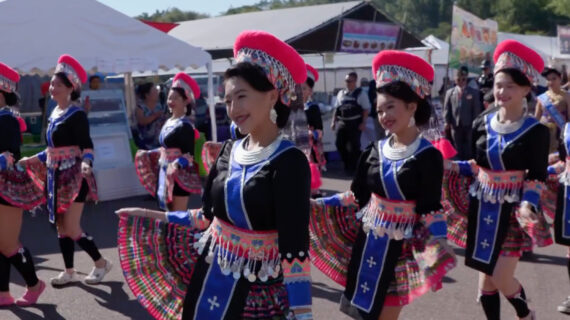
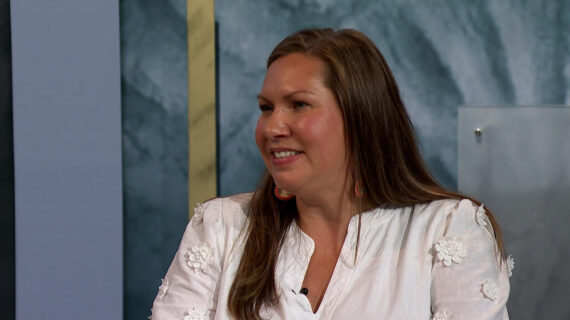


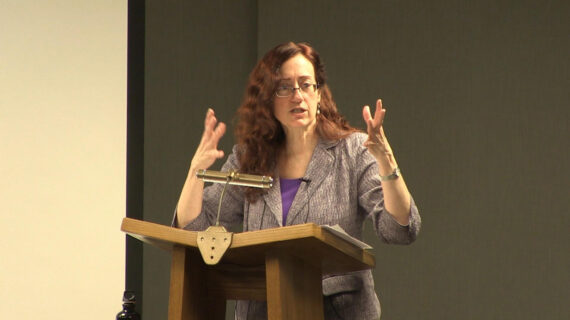
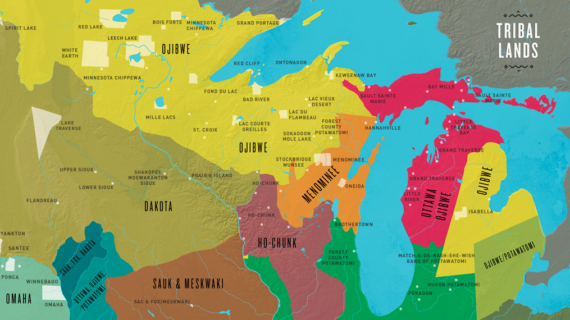
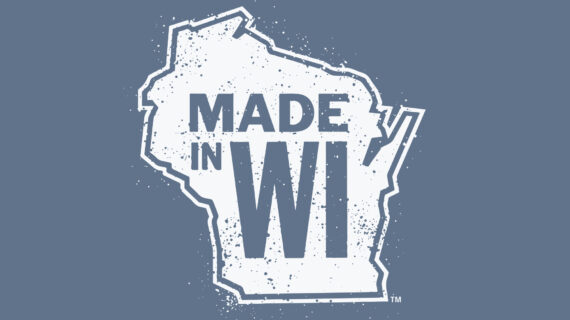
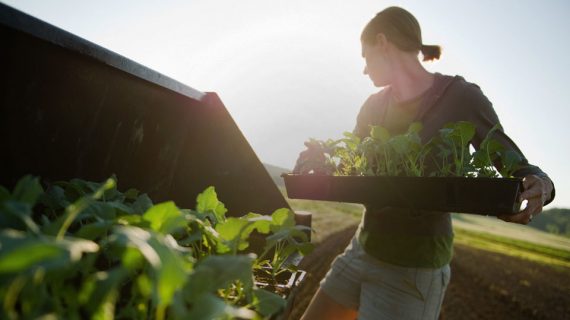
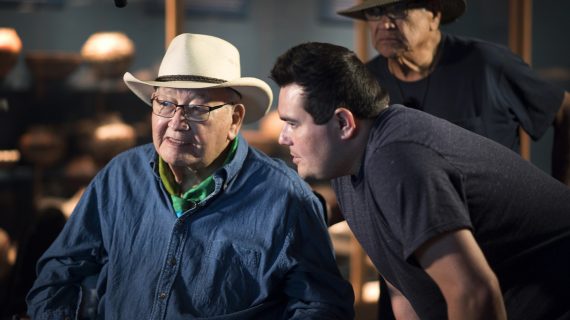



Follow Us